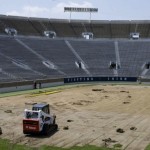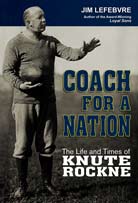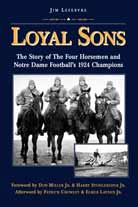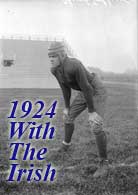Notre Dame traditionalists were struck by the images last week of backhoes removing the sod from Notre Dame Stadium in preparation for the installation of artificial turf.
Yes, it is an emotional change in the House That Rockne Built. After all, back in 1930, the sod from legendary Cartier Field—where Rockne, Gus Dorais, George Gipp, the Miller brothers, the Four Horsemen, and Seven Mules starred—was reverently taken up and replanted in the new Stadium.
Of course, it’s been torn up and replanted numerous times since then, especially in recent years as the challenge of keeping quality natural grass has intensified.
As I travel around the country speaking to various groups about the life and legacy of Coach Rockne, I often get asked, in one form or another, what he would think about football, sports, life today. As with all of our long-ago heroes, we tend to romanticize Rockne as representing all that was good about the “good old days.”
But keep in mind, Rockne’s forte was looking forward, seeing a game played and promoted in a different way than before. He was always looking for new ways to do things—faster, better, more efficiently.
When air travel, for instance, presented itself as a much more efficient mode of transportation than the endless train rides that Rockne endured for decades, he was an early adaptor to the air.
I’m sure Rock enjoyed the smell and feel of newly mowed grass on all parts of Cartier Field (which encompassed all sports and their practice areas). He had his occasional spats with groundskeepers whom he felt didn’t do the hallowed grounds justice. But I have to think that, especially as athletic director, he would have been all over a field alternative that provides consistency, value, durability, and low maintenance…tradition be damned.







